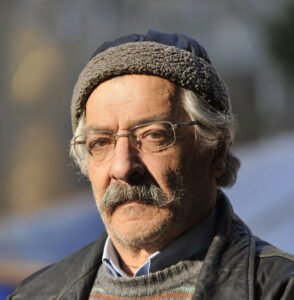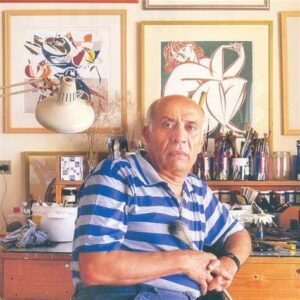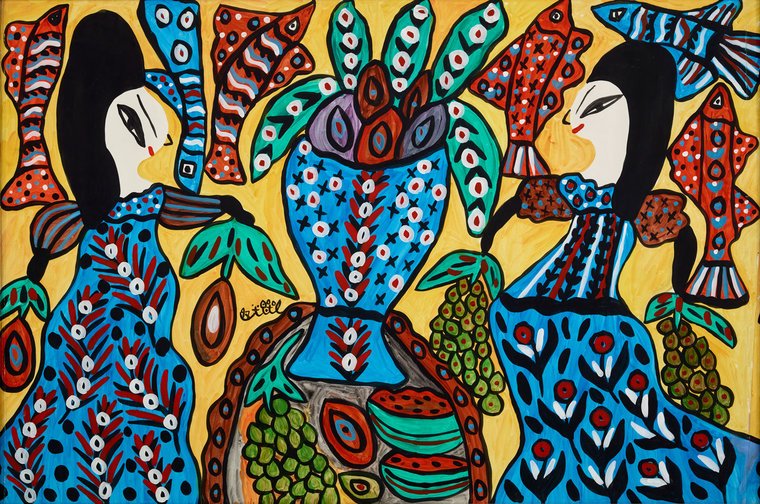
Born Fatima Haddad on 12 December 1931 in Bordj el‑Kiffan, near Algiers, Baya lost her parents at age five and was raised by her grandmother and later by Marguerite Caminat Benhoura, who recognized her talent and offered her refuge and art materials at age eleven . Raised between Arab and Kabyle traditions amidst rural landscapes, Baya began to sculpt clay figures and paint flowers, birds, and women—setting the foundation for her luminous artistic vocabulary.
🖼️ Paris Debut & Surrealist Acclaim (1947–1952)
At just sixteen, Baya held her first solo exhibition at Galerie Maeght in Paris (1947), organized by influential dealer Aimé Maeght with a foreword by André Breton, who exclaimed: “Baya is queen” of a new artistic age. That summer, she worked at the famed Madoura ceramics studio in Vallauris, where she met Pablo Picasso, whose iconic Women of Algiers series drew visible inspiration from Baya’s bold forms and color palette .
Critics struggled to categorize her work—terms like Surrealist, naive, and primitive were applied—but Baya resisted labels, preferring to let her vibrant compositions of women, flora, and fauna speak for themselves in her own authentic “Baya-ism” .
🎶 Marriage, Silence & Post‑Colonial Revival (1953–1963)
In 1953, Baya married El Hadj Mahfoud Mahieddine, an esteemed Arabo-Andalusian musician, and dedicated herself to motherhood during Algeria’s struggle for independence, raising six children . She temporarily ceased producing art—a powerful act of silent resistance during colonial upheaval. After independence (1962), she returned to painting in 1963, encouraged by the Algiers Museum of Fine Arts and renewed by her cultural roots.
🌸 Mature Vision & Signature Style (1963–1980s)
Resuming her practice with vitality, Baya’s oeuvre celebrated women, birds, flowers, musical instruments, and lush organic forms—all united by bold gouache palettes, repetitive patterns, and figures defined by heavy black outlines and striking almond eyes. Works like Femme au paon (1947) and later The Musician (1978) capture a visionary feminine universe—a surreal paradise ruled by women, where men are absent—a creative decision with feminist and cultural resonance.
Her style combined Arab-Berber folk motifs, Islamic ornamental traditions, and a self-styled modernism that defied Western categorization. Critics described her world as dreamlike, emphasizing feminine agency and natural harmony.
🖼️ International Recognition & Later Life (1980s–1998)
Baya held numerous solo and group exhibitions across France (Marseille 1982 at Musée Cantini), Algeria, Sharjah, and North America—including her first U.S. solo show, Baya: Woman of Algiers, at NYU’s Grey Art Gallery in 2018 . In 1987, she was honored by Algerian President Chadli and participated in cultural exchanges like the Havana Biennale (1986).
Although often underrecognized globally, her paintings remain held in collections at the National Museum of Fine Arts of Algiers, Institut du Monde Arabe (Paris), Picasso Museum (Antibes), Barjeel Art Foundation (Sharjah), and more
🌟 Legacy & Artistic Influence
- Trailblazer of Algerian modernism: among first Arab female artists to gain international acclaim.
- Pioneer of feminine paradises: vivid, women-centric dreamscapes that challenge patriarchal and colonial perspectives.
- Cross-cultural inspiration: her work influenced giants like Picasso and Breton while remaining rooted in North African cultural aesthetics.
- Resilience through art: her return post-independence symbolized personal and national renaissance.
👵 Final Chapter & Timeless Impact
Baya Mahieddine passed away on 9 November 1998 in Blida, Algeria (turn1search12). Though initially framed by colonial and Surrealist frameworks, modern scholarship reclaims her as a pioneering self-taught artist whose work foregrounded female subjectivity, nature, and cultural pride. Her inclusion at the 2024 Venice Biennale cements her as a global figure of modern art .
🎨 Key Works & Artistic Profile
- Full Name: Fatima “Baya” Haddad Mahieddine (1931–1998)
- Key Works: Femme au paon (1947), Women & Orange Trees (1947), The Musician (1978)
- Time Period: 1947–1998, spanning post-colonial and modernist epochs
- Artistic Style: Self-taught “Baya-ism”—a luminous blend of Surrealist color, naive clarity, Algerian folk tradition, and feminist aesthetic
- Cultural Influence: A pioneering Algerian female voice in modern art—bridging North African intuition and European avant-garde vision

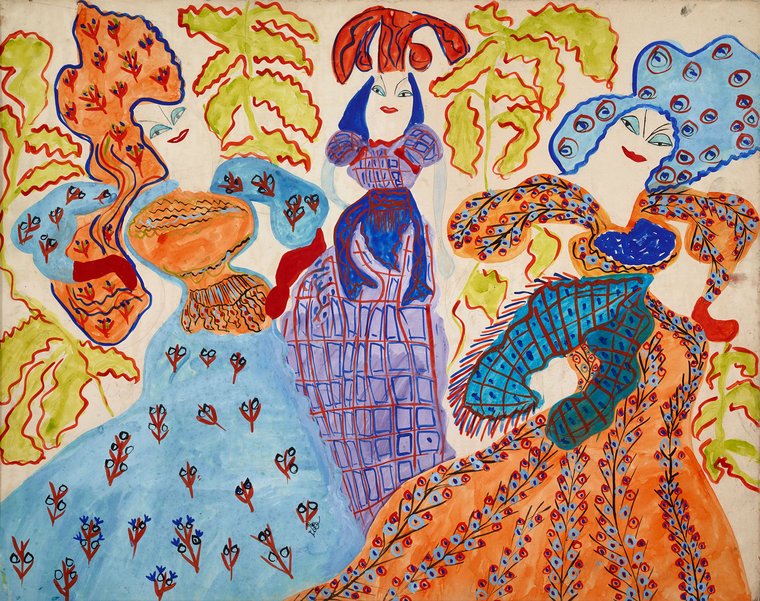
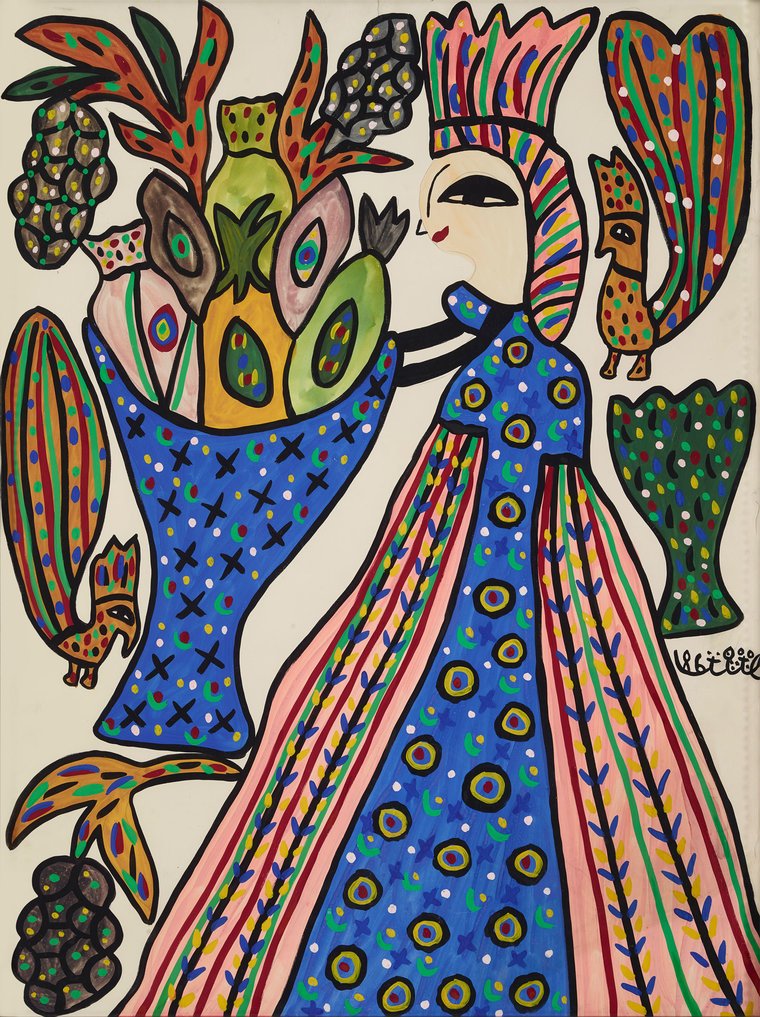
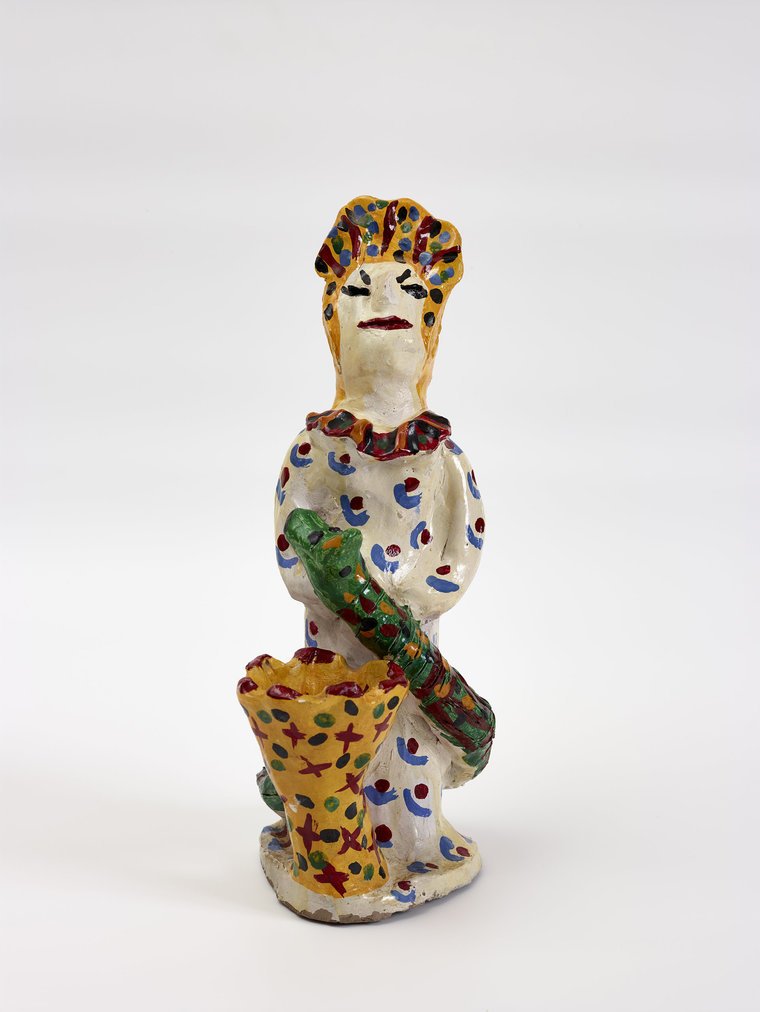
📚 Sources
Wikipedia: Baya (artist) (turn1search12)
Lilia Ben Salah Gallery – Biography & influence (turn1search0)
Ayn Gallery – Style and feminist perspective (turn1search3)
Encyclopaedia Mathaf – Training & exhibitions (turn0search7)
Grey Art Gallery – North American show (2018) ([turn1image1], turn1search11)
OPEC Fund / Grey Art editorial – Style & influence (turn1search4, turn1image2)
House of Beau / Elmarsa – Biography and key exhibits (turn1search6, turn1search10)
Sharjah Art Foundation – Collections (turn1search1)
Venice Biennale – Profile, 2024 (turn1search2)



